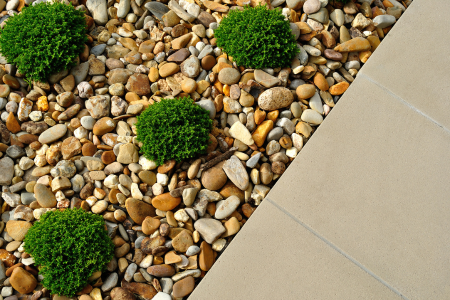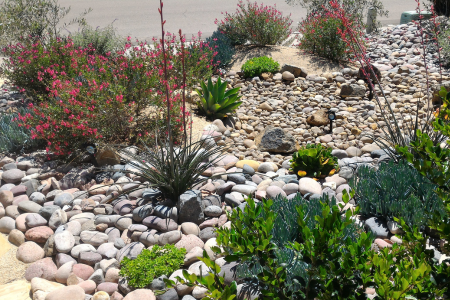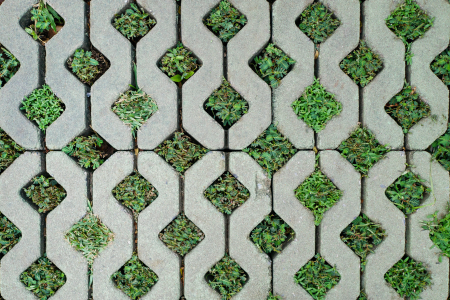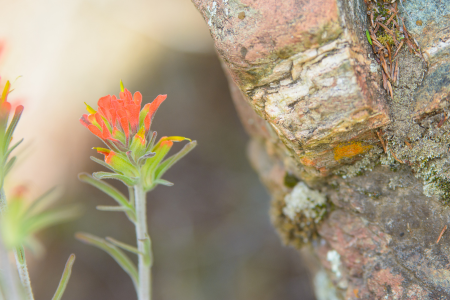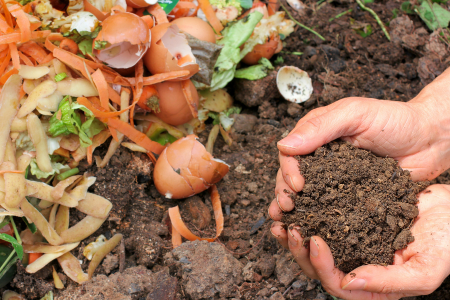The rising concerns over climate change and a sustainable future have boosted the demand for eco-friendly properties. Living spaces with eco-friendly features do more than just reduce the carbon footprint. Such properties benefit the owners in several ways such as cost savings, health improvement, and a significant rise in property value. Healthy landscaping can speed up the sale of a property by as much as 6 weeks and add up to 14 percent to its resale value.
It is no wonder that owners are now striving harder to make their properties nature-friendly, resource-efficient, and sustainable. It is important to remember that efforts to improve the sustainability of a property must extend beyond the structure and its interiors. For ultimate benefits, the external surroundings of a structure must also be eco-friendly. The key to doing that is sustainable landscaping. Read on to find out more about the transformative strategy of sustainable landscaping and the techniques you can use to avail the advantages.
What is Sustainable Landscaping?
It is the practice of designing and maintaining outdoor spaces (landscapes) to maximize their environmental, social, and economic benefits. Sustainable landscaping also helps eliminate or reduce the issues commonly associated with urban landscaping, such as water waste, chemical pollution, soil degradation, excessive energy consumption, and waste generation. This landscaping strategy proves beneficial over the short and long term. It is also known as eco-friendly landscaping or green landscaping.
Benefits of Sustainable Landscaping
Sustainable landscaping leads to improved curb appeal and stunning aesthetics in general, but its advantages extend far beyond mere improvement in property appearance. Benefits of sustainable landscaping include but are not limited to the following:
- Environmental benefits: It is in the name. The term ‘sustainable’ itself implies ecologically responsible methods. It is obvious that sustainable landscaping is great for the environment. Water conservation, soil improvement, and the creation of healthier ecosystems that enhance biodiversity are some associated benefits.
- Well-being and lifestyle benefits: Sustainable landscaping facilitates the creation of healthier living environments. Plants filter pollutants and improve air quality, which can potentially reduce respiratory issues and improve health. Sustainable landscaping does not rely on synthetic substances, pesticides, and fertilizers, so it minimizes exposure to harmful chemicals, which can prevent associated health problems.
- Well-planned outdoor spaces for entertainment promote physical activity, and thereby potentially improve fitness and cardiovascular health. Moreover, spending time in natural settings helps lower stress levels and aids relaxation. In a nutshell, carefully designed outdoor spaces can lead to a cumulative improvement in overall physical and mental health.
- Economic benefits: Sustainable landscaping methods use less water, which means lower water bills. These techniques also need less maintenance, fertilizers, and pesticides, further reducing costs. Natural cooling through plants and trees may help save on the energy costs of air conditioning. Apart from the lower utility bills, sustainable landscaping techniques may open the doors for tax incentives and rebates.
Additionally, techniques such as rain gardens and permeable pavements help manage stormwater runoff and promote natural filtration, reducing the costs of water treatment and flood damage. And lastly, sustainable landscaping makes properties more attractive to the right kind of buyers, thereby increasing their value and marketability.
Related Reading: Use Landscaping to Increase Home Value
Key Sustainable Landscaping Practices
These are some ways to enhance your property through sustainable landscaping:
Xeriscaping
This practice involves planning and designing outdoor spaces in a way that either reduces or eliminates irrigation requirements. Since a landscape designed this way can thrive with minimal water, xeriscaping helps in water conservation.
Although xeriscaping can prove useful in any area, it is particularly effective in arid and semi-arid places. Xeriscaping requires the conduction of site analysis to study its topography, soil, and microclimates. The insights from this analysis will inform the design.
Installing Permeable Hardscapes
This practice involves substituting permeable materials in the place of traditional concrete to allow water to seep unimpeded into the ground. Landscaping may be done using a gravel grid, porous concrete, permeable pavers, grass pavers, or even wood mulch. Permeable hardscapes reduce stormwater runoff, help recharge groundwater, aid erosion control, and facilitate the filtration of pollutants from water. The variety of materials available for this purpose allows for greater design flexibility.
Using Native Plants
This is another one of the simplest green landscaping techniques. Utilization of native plants in landscaping provides aesthetic as well as practical benefits.
Native plants will in general require less maintenance than the non-native ones. Exotic plants from other regions or countries require more care, intervention, irrigation, and fertilizers to survive in a different type of environment. Native plants are suited to the local conditions (such as temperature variations, local rainfall patterns, and soil types), are more resistant to local pests, and will require fewer resources.
Additionally, native plants help preserve biodiversity and are better for the local wildlife. Many species of animals and birds depend on local plants for survival. For instance, the chickadees can only raise their young successfully in a territory with 70 percent native plants.
Gas-powered equipment used for lawn maintenance is a significant cause of air pollution; this problem will not occur with native plants as their upkeep is simple and they require less pruning.
Composting
If you check the largest sources of waste in the US, food waste and yard trimmings find a place among the top five. Composting is a sustainable method of managing such waste materials. It involves the recycling of such materials into a valuable soil component. If not utilized through composting or similar recycling methods, these materials will eventually end up in landfills and trash incinerators, leading to greater greenhouse gas emissions. On the other hand, utilizing that waste through composting will help you reduce dependence on synthetic fertilizers, and provide you with free rich soil nutrients. It is a win-win technique.
Wrapping Up
Start planning and implementing sustainable landscaping practices to contribute to environmental sustainability and enhance your property value. While the initial costs of sustainable landscaping methods may be higher, the savings and significant benefits make it worthwhile. Consider getting eco-friendly upgrades to your property as an investment in the future.

